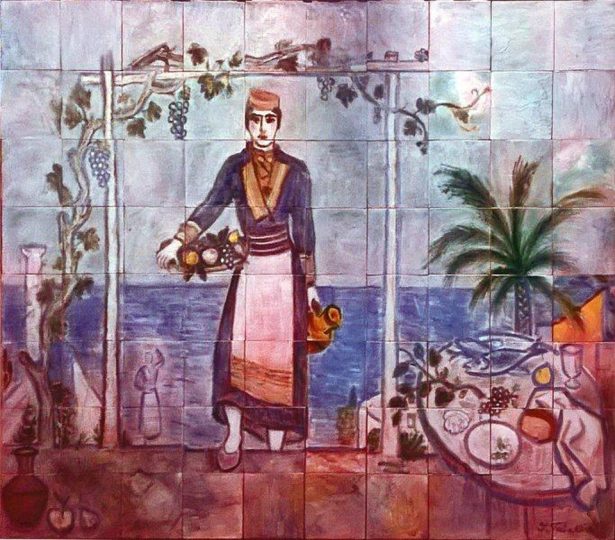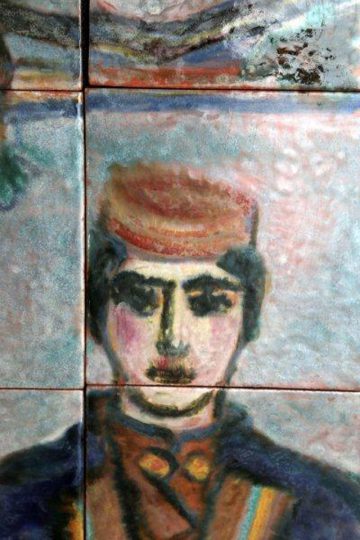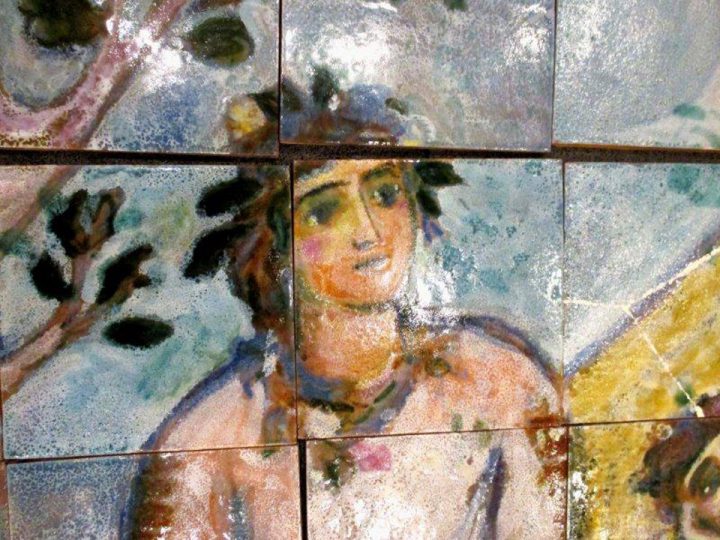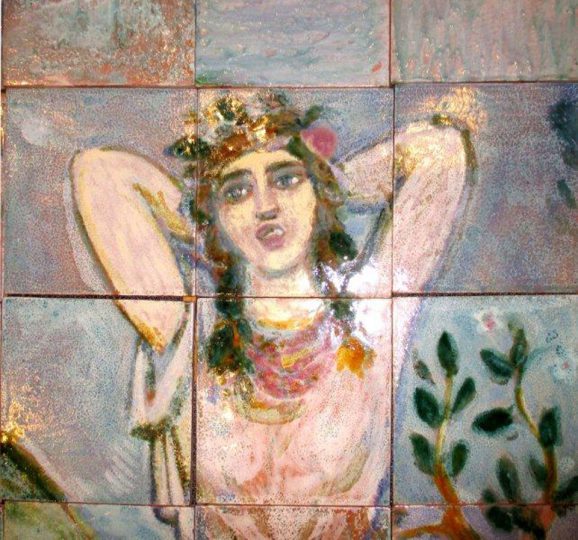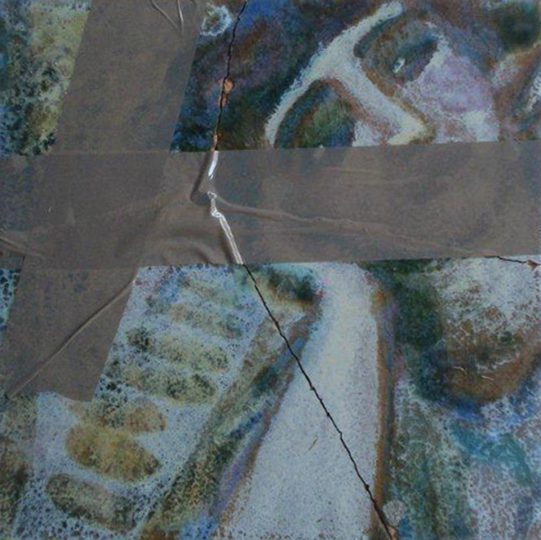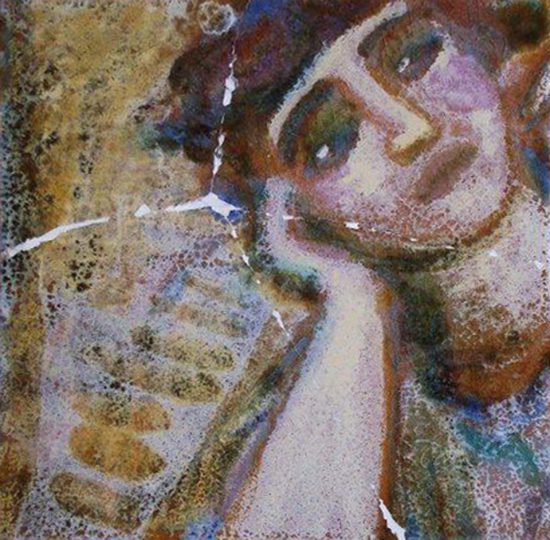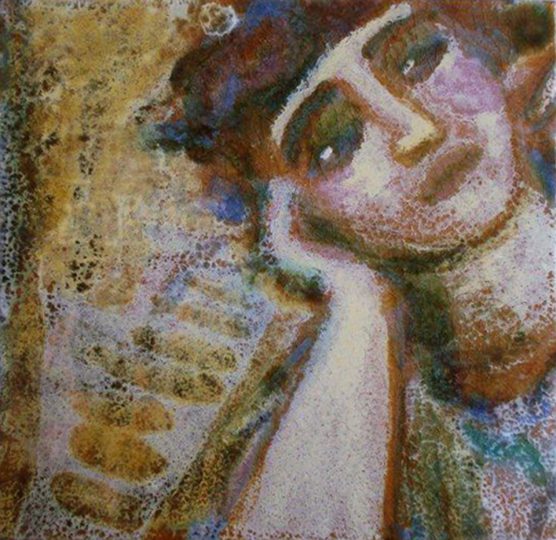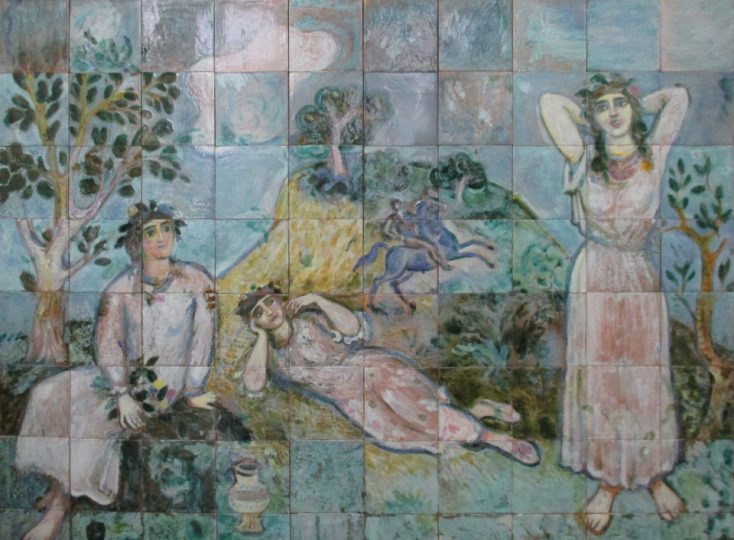Conservators: Dragana Dingarac Krivaja and Milan Andrić, MAA
Organized by: Museum of Applied Art, Belgrade
The themes of panels are harmonized with the integral Yugoslavism ideology. The Motif from Central Serbia is inspired by the donor’s portrait of Despot Stefan Lazarević – an early 15th-century fresco in the church of the Resava monastery. The Dalmatian Woman shows the beauty of everyday life on the Adriatic coast. The Croatian Spring is an allegorical image that celebrates the coming of spring in Croatian mountains. The Bosnian Motif evokes an Oriental atmosphere by showing a landscape with a mosque and two female figures in shalwar. Due to their artistic value, the panels were awarded in Paris with an honorary diploma. Today, they are masterpieces of ceramic art, made in the pioneering years of this artistic discipline in Serbia.
The Motif from Central Serbia, Dalmatian Woman and Croatian Spring became part of the collection of the Museum of Applied Art on 16 February 1959. They were exhibited together only once, in 1979, at the exhibition of Contemporary Ceramics in Serbia, authored by Svetlana Isaković, a long-time curator and director of the Museum of Applied Art in Belgrade.
The panels Dalmatian Woman and Croatian Spring (245 × 195 cm) are composed of eighty pieces – ceramic tiles which are arranged in eight horizontal rows, ten in each row. They were rendered in the soft faience technique, which means that each painted tile was baked at a temperature of about 1150°C.
The tiles were made manually and were shaped using moulds. The back side of the tiles shows the name of Károly Baranyi, the year 1937, when he made and prepared them for Tabaković’s work, and the serial number written in black pigment. On the back side, the tiles have four perforations through which steel wire is passed which fixes them to the wooden supporting structure. Baranyi made the tiles from clay to which fireclay (granulate of sintered tiles) was added to reduce the possibility of deformation during firing. Ivan Tabaković then painted the scenes (under the glaze) with frit colours and glazed them with transparent shiny glaze. He signed both panels: Dalmatian Woman in the lower right corner (the signature was restored) and Croatian Spring in the central part of the scene – on the chalice. Owing to his collaboration with Baranyi, Tabaković managed to complete in a short time – in only three months, these first monumental ceramic paintings in the Kingdom of Yugoslavia.


